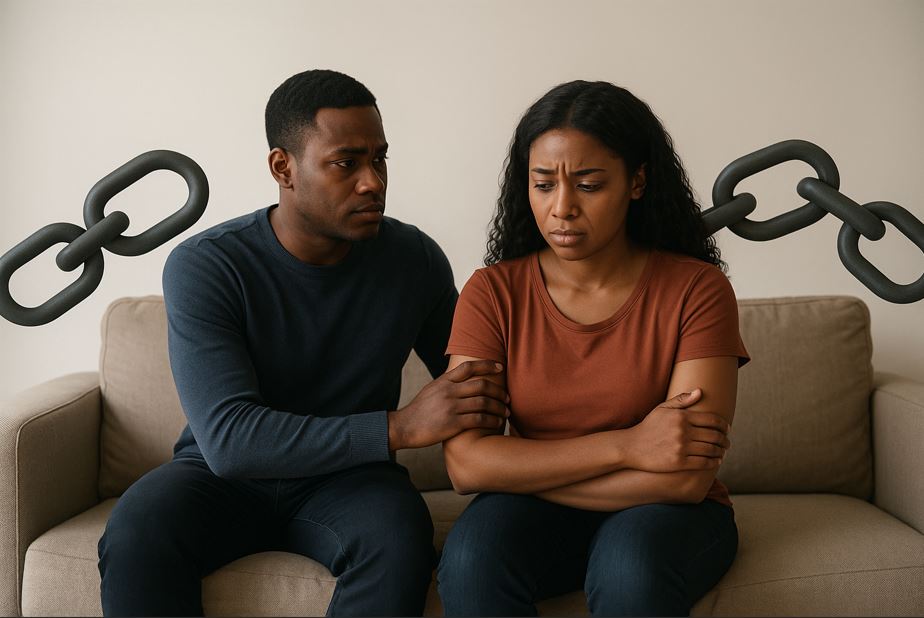

The recent incident involving Salma Mbuvi, daughter of former Nairobi governor Mike Sonko, has triggered debate about abusive relationships and the traps that keep victims tied to their abusers.
Salma startled many Kenyans when, moments after accusing her husband of assaulting her, she moved quickly to stop one of Sonko’s bodyguards from retaliating against him.
“Usipige bwana yangu (don’t hit my husband),” she pleaded—despite having just narrated how her husband had slapped her twice simply for asking what to prepare for their children’s breakfast.
The contradictory nature of her reaction left many stunned.
Why would someone defend the very person who had harmed them only moments earlier?
Her response, observers note, underscores the difficult and often misunderstood reality of trauma bonding, a psychological pattern in which a victim develops an emotional attachment to an abusive partner.
Sonko, who rushed to his daughter’s home after receiving her distress call, later took her away from the house and warned her husband never to lay a hand on her again, stressing that violence is never acceptable.
But beyond the immediate incident, Salma’s reaction has ignited broader conversations about why victims of domestic violence often stay, defend, or protect their abusers—even in moments of visible danger.
Trauma bonding is a powerful emotional connection that forms between an abuser and a victim, created and reinforced through repeated cycles of abuse, reconciliation, and temporary calm.
Experts say it is one of the most misunderstood elements of intimate partner violence.
According to Natacha Duke, a registered psychotherapist with the College of Registered Psychotherapists of Ontario, trauma bonding occurs “when a person who is or has been abused feels a connection to their abuser.”
“It may be surprising to hear that you can develop a bond with someone who treats you poorly, but this is why the cycle of abuse is an important puzzle piece. The cycle of abuse can create a false sense of safety during the reconciliation and calm phase,” Duke explains.
These calm periods—when the abuser apologises, promises change, or temporarily behaves affectionately—create hope, emotional relief, and a fleeting sense of safety.
Duke notes, “This cycle is often what elicits feelings of attachment. And the feelings similar to a bond happen toward the abuser or perpetrator.”
For many victims, these temporary moments of peace become emotionally addictive.
They hold on to the belief that the abuser can change, or that the “good” version of their partner will eventually prevail.
Trauma bonding does not only happen in romantic or marital relationships.
It can occur in any setting where there is a power imbalance combined with cycles of abuse.
Duke explains that trauma bonding is especially common in parent–child relationships marked by abuse.
“The child really wants relief from the abuse and an emotional attachment with their parent or guardian,” she notes.
The child’s longing for affection makes the bond even stronger, despite the harm they endure.
Even organisations such as fraternities or sororities can
produce trauma bonds.
Abusive initiation rituals and humiliation are often followed by periods of bonding, celebrations, and rewards—creating the same destructive pattern of abuse followed by temporary affection or acceptance.
Trauma bonding is central to cases of Stockholm syndrome, where kidnapping victims eventually develop emotional ties with their captors.
“There are many famous cases where the victims had a chance to escape but didn’t because they come to have this trauma bond with the captor,” Duke explains.
The impact of trauma bonding can be profound.
Victims may experience: Chronic anxiety, depression, emotional numbness, loss of self-esteem, difficulty trusting others and PTSD (post-traumatic stress disorder).
Even after leaving an abusive relationship, many survivors struggle with guilt, confusion, or a sense of grief.
Detaching from someone they have bonded with, however harmful, can feel emotionally similar to a breakup or bereavement.
Pathways to healing from trauma bonding begin with recognising the bond itself.
Experts emphasize that the first step is naming the pattern and acknowledging that the attachment exists.
By accepting this reality, a survivor initiates the journey toward breaking the cycle.
Therapy and counseling often play a crucial role in this process, especially when guided by professionals who specialize in trauma.
Specialists note that a therapist can provide a safe space to talk about thoughts, feelings, and experiences, while also diagnosing and treating conditions such as PTSD, anxiety, or depression, which are common consequences of abuse.
Support groups offer another vital layer of healing.
Sharing experiences with others who have survived similar relationships helps victims feel less alone and provides emotional strength.
These groups also offer practical advice on safety planning, coping mechanisms, and rebuilding life after abuse.
For those dealing with severe anxiety or depression, medication may be necessary to help alleviate symptoms as they work through their trauma.
Professionals strongly caution survivors against leaving an abusive situation impulsively.
They stress the importance of creating a safety plan before exiting.
Such a plan may include securing safe housing, informing trusted friends or family members, arranging transportation, and preparing emergency contacts.
Trauma bonding thrives in silence, denial, and isolation, and breaking the cycle requires naming it, confronting it, and seeking help.
As
experts affirm, therapy is an incredible tool—not just for understanding
trauma, but for learning healthier patterns and making better choices moving
forward.















